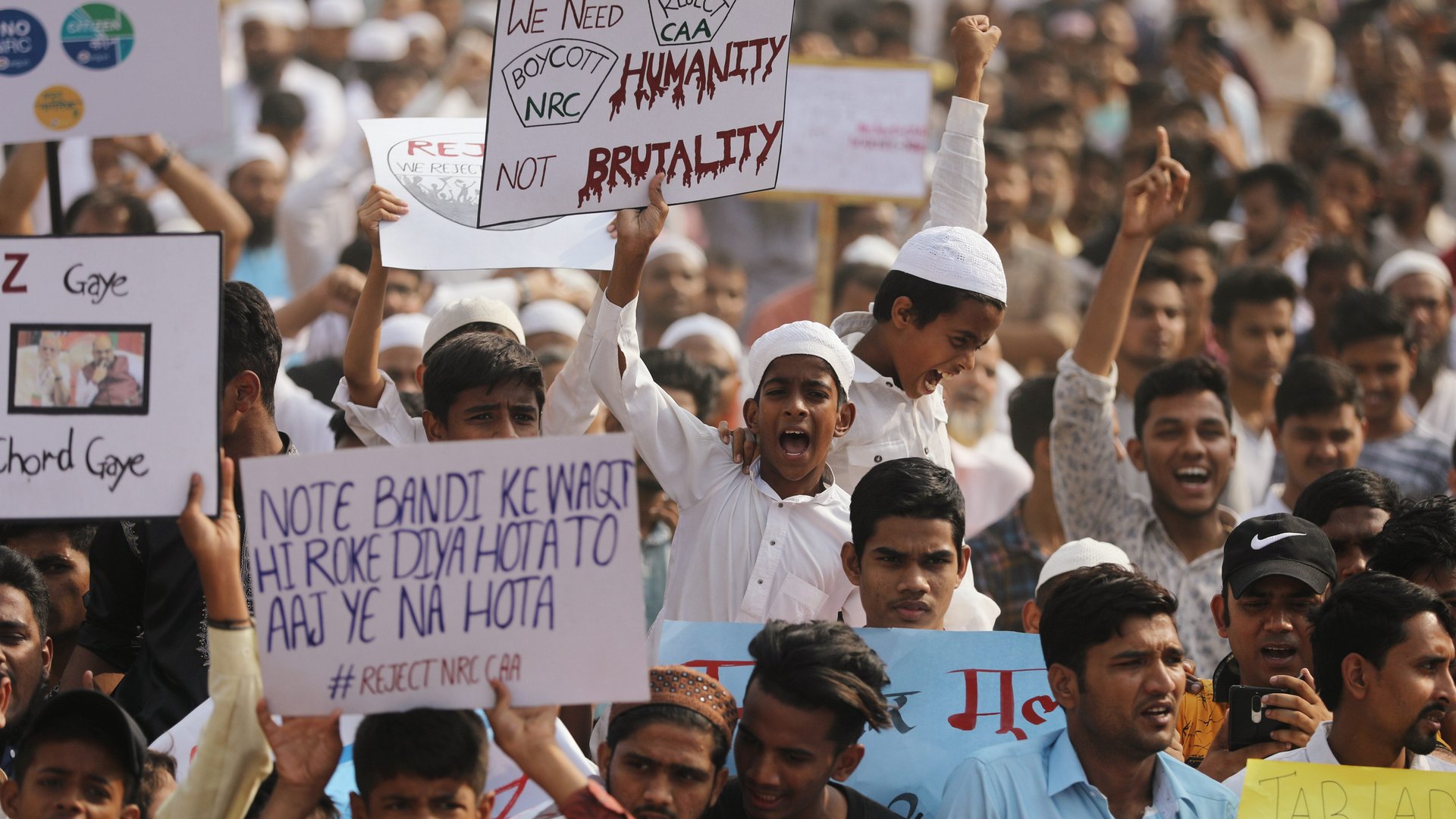“It’s almost like a cry for help”: An Indian poet gets at the heart of protests around the world
Varun Grover is an Indian writer and comedian. Like many other Indian artists, academics, and intellectuals, he has been supporting the ongoing protests against the Citizenship Amendment Act (CAA), introduced by Narendra Modi’s government earlier this month. The law would fast-track citizenship for non-Muslim immigrants and refugees, and, in conjunction with a proposed nationwide citizenship register, is seen as a act of discrimination against Muslims, the largest minority group in the country.


Varun Grover is an Indian writer and comedian. Like many other Indian artists, academics, and intellectuals, he has been supporting the ongoing protests against the Citizenship Amendment Act (CAA), introduced by Narendra Modi’s government earlier this month. The law would fast-track citizenship for non-Muslim immigrants and refugees, and, in conjunction with a proposed nationwide citizenship register, is seen as a act of discrimination against Muslims, the largest minority group in the country.
But rather than inspiring protestors with ardent speeches against the CAA, Grover has taken the stage at rallies wielding the power of poetry. “Raise your baton as much as you can/ shut down any train you can/ we will walk, we will flow,” he recited on stage in Mumbai, to a cheering crowd.
These were lines from his poem, Kagaz Nahi Dikhayenge (We will not show our papers), which speaks on behalf of those who will refuse to cooperate with the government in proving their citizenship. The poem has become an anthem of the protests.
Poetry and protests have often gone hand in hand. In the past weeks and months, people in Hong Kong, Chile, Lebanon, and other countries have taken to the streets to protest their governments, many using poems to express their discontent. Like chants or slogans, poems—especially when, like Grover’s, they are recited in rallies, together with the crowd—give people words to express their power, while speeches offer calls to action that can leave the audience on the receiving end.
In a video discussing the role of poetry in the protests, Grover explains that poems highlight an important aspect of the protests: They attempt to draw attention to a message that isn’t being heard. “People call it protest, but it’s not protest,” says Grover. “It’s almost like a cry for help by people who have no other power.”
In these cases, the intended audience isn’t just the government, or the country: It’s everyone, globally, who cares to watch.
The desire to send messages beyond borders has been a common refrain since the Arab Spring highlighted the role of social media in making protests visible. But it seems especially important in the context of protests taking place in India, Italy, and Hong Kong—because the positions expressed by these protesters, while in defense of democratic values, are not in line with the majority of their countries.
In India, as in Italy, nationalists and populists enjoy strong popularity. A Hindu-first country was part of Modi’s government campaign, which won him a sizable victory. And although they aren’t in the government, Italy’s far-right parties, Lega and Fratelli d’Italia, would get the votes of a combined 46% of Italian voters, according to the latest polls (link in Italian). Hong Kong is similar, in a way: Despite receiving both global and local support, the protesters represent a small minority of the country from China’s perspective.
These protests are trying to defend democracy without the numbers of democracy on their side. This is when the concept of a protest as “cry for help” becomes key: It is a call for the world to stand up for what is right, from within countries that do not. And while it might not move their governments, poems can at least ensure there is a message to hear for anyone who has ears—one that is loud, and clear. And rhymes.